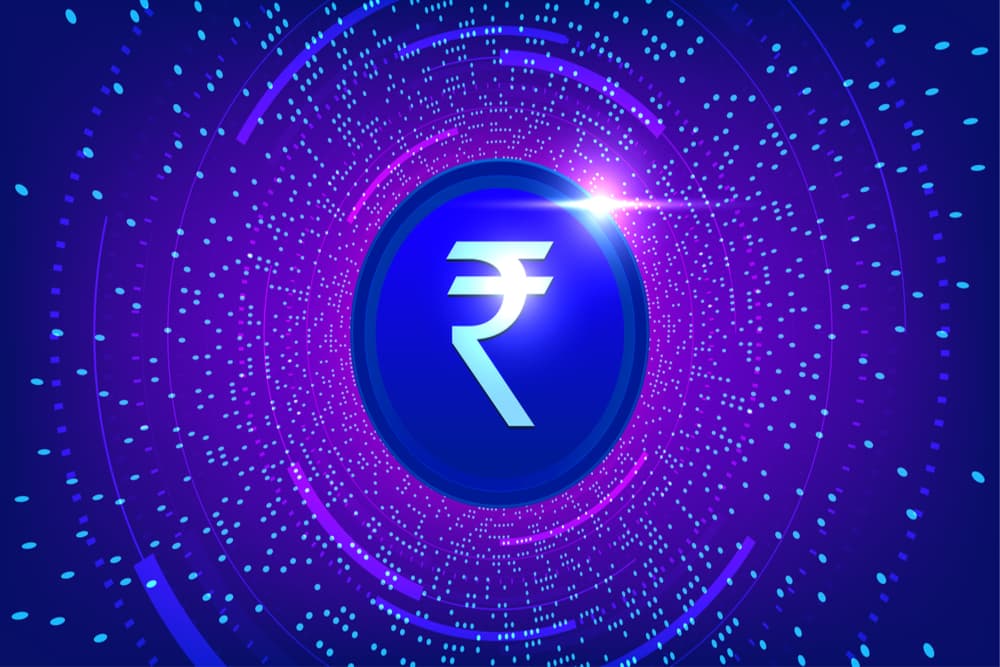The central bank digital currency CBDC Pilot Crosses 1 Million Users, T Rabi Sankar, deputy governor, Reserve Bank of India (RBI) said in a media release on 11 July, 2023.
The central bank launched the pilot project of CBDC, popularly known as ‘Digital Rupee’ on December 1, 2022, for the retail segment. At present, 13 banks are participating in the pilot for the retail segment. According to the RBI annual report, initially, eight banks – State Bank of India, ICICI Bank, Yes Bank, IDFC First Bank, Bank of Baroda, Union Bank of India, HDFC Bank, Kotak Mahindra Bank – were taken for the pilot project. Recently, Punjab National Bank, Canara Bank, Federal Bank, Axis Bank, and IndusInd Bank have joined the project.
“The pilot in CBDC-Retail is proposed to be expanded to more locations and include more participating banks,” RBI said in its annual report released in June 2023. As of June 30, 2023, there are more than a million users in the retail pilot, thus reflecting the fast acceptance of the digital rupee.
Says Sankar, “I believe, like in the case of UPI, we will witness a lot of innovation on this tokenized form of money in the days to come.”
What Is the Digital Rupee?
The CBDC is the central bank’s answer to privately owned cryptocurrencies. It uses Blockchain technology but is issued and supervised by the central banks, which makes it a sovereign currency.
India’s CBDC is known as the ‘Digital Rupee’, and its symbol is ‘e₹’. It is regulated by RBI, and thus, like the physical form of the currency, it offers a sovereign guarantee. It is also a legal tender that can be used for any transaction. The only difference it has with the physical currency is that it is in an electronic form, and therefore, can be stored in the digital wallet.
According to the RBI, the currency in circulation (CiC) includes banknotes, coins, and digital rupee (e₹). The banknotes comprise denominations of Rs. 2, Rs. 5, Rs. 10, Rs. 20, Rs. 50, Rs. 100, Rs. 200, Rs. 500, and Rs. 2,000. The coins comprise 50 paise, Re. 1, Rs. 2, Rs. 5, Rs. 10 and Rs. 20. The digital rupee (e₹-Retail) has been launched in denominations of 50 paise, Re. 1, Rs. 2, Rs. 5, Rs. 10, Rs. 20, Rs. 50, Rs. 100, Rs. 200, Rs. 500 and Rs. 2,000.
How Does It Work?
As many banks are providing digital rupees under the pilot phase, it is available to only a few people, at present.
Like paper currency, RBI has the responsibility to issue electronic tokens and distribute them to intermediaries, who are called Token Service Providers (TSPs). Further, banks obtain these tokens from RBI through TSP merchants. The issuance is processed online. Then, the banks make these tokens available to the customers via digital wallets.
The customers can get their cash holdings converted to digital rupee from the bank on request and withdraw the digital tokens the same way they would withdraw cash, says HDFC Bank, one of the pilot participants, on its website.
The scope of digital currency is only to grow in the future with RBI’s push for fintech innovation and better regulation. According to RBI, the digital form of currency brings with it multiple possibilities of innovation and efficiency, such as features of offline, programmability, and cross-border transactions in current systems. It may also create altogether new frameworks for the financial system to operate in.




